East London scheme at former Royal Mint site will be biggest foreign diplomatic outpost in England
David Chipperfield Architects’ plans to convert the former Royal Mint base near the Tower of London into a new embassy for the People’s Republic of China are set to get the stamp of approval later this week.
China bought the 2.1ha site, north-east of Tower Bridge, in 2018 with the intention of creating a new embassy to replace its current Portland Place outpost. The site had been home to the Royal Mint until 1976, after which it was converted for other office use augmented by new low-rise buildings.
Sheppard Robson and Morrow & Lorraine won planning permission for an office-and-retail-led redevelopment of the site in 2016, but that consent has now lapsed without implementation.
Chipperfield’s proposals for the new embassy were lodged with Tower Hamlets Council in November last year. They would see the refurbishment of the grade II* Johnson Smirke building, by James Johnson and British Museum architect Robert Smirke, which was completed in 1811 and which is at the heart of Royal Mint Court. It would serve as the main embassy building.
The proposals would also involve the partial demolition and remodelling of the grade II Seamans Registry building, designed by Johnson, and completed in 1805. It would deliver ancillary office space for the embassy. A report to members of Tower Hamlets Council’s strategic development committee said there would be only “minimal external alteretions” to either listed building.
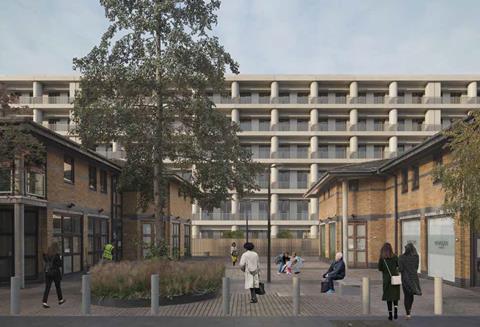
However the 1980s Dexter House and Murray House buildings by Sheppard Robson and RMJM on the site would be stripped back to their superstructure and split into two separate buildings of up to eight storeys under the proposals.
One of those buildings, “Embassy House”, would deliver 225 flats for staff. The other is dubbed the “Cultural Exchange” building and would be used for embassy events and visa-processing.
Tower Hamlets planning officers said the resulting embassy complex would be the largest in the UK.
Recommending the scheme for approval, they said Chipperfield’s proposals were well-designed and would “deliver a high quality, well integrated, inclusive and sustainable place”.
They added that the proposals to break up Dexter House and Murray House would open up new views of the Johnson Smirke building and deliver “a new landmark building of true distinction and architectural quality” in the Cultural Exchange. Planning officers said that building would a “bold green/grey ceramic building with celadon-coloured glazing”.
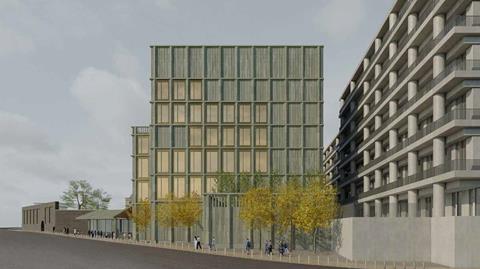
Campaign group the Twentieth Century Society objected to the remodelling of Dexter House and Murray House, arguing that the proposals would result in the loss of “unique 20th-century buildings which contribute to the architectural interest of the Tower of London Conservation Area”.
Planning officers said they recognised that Murray House and Dexter House were “of some limited historic interest” as examples of 1980s office buildings. But they said the buildings would not have enough heritage significance to merit the status of non-designated heritage assets.
They added that government heritage adviser Historic England supported the application.
Tower Hamlets’ strategic development committee meets to consider the proposals at 6.30pm on Thursday.










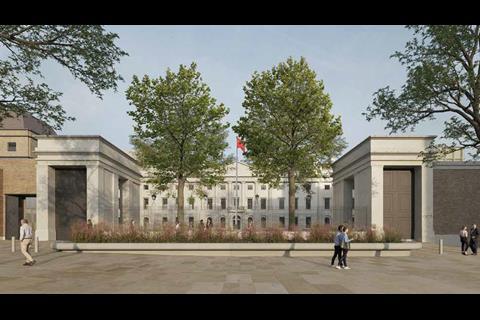
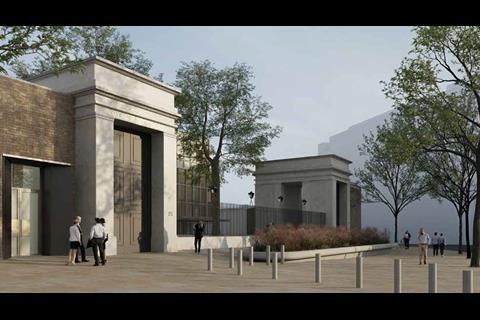


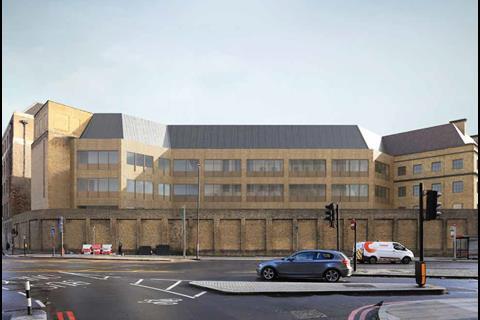








1 Readers' comment